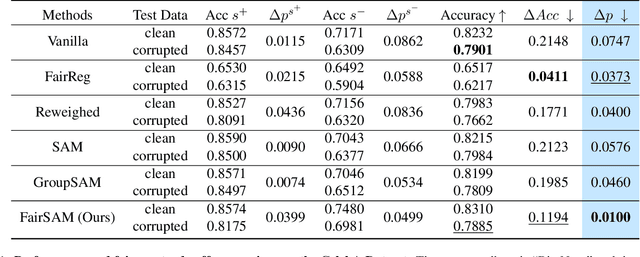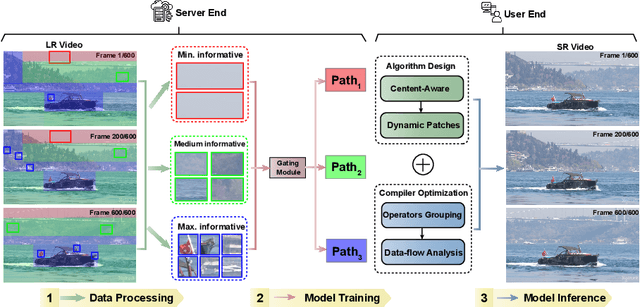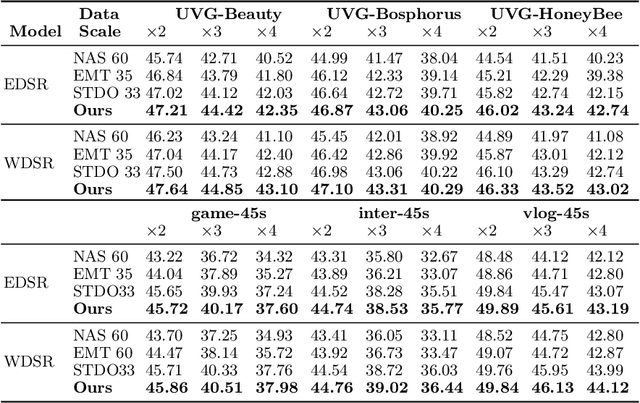Xiaolong Ma
Your RAG is Unfair: Exposing Fairness Vulnerabilities in Retrieval-Augmented Generation via Backdoor Attacks
Sep 26, 2025Abstract:Retrieval-augmented generation (RAG) enhances factual grounding by integrating retrieval mechanisms with generative models but introduces new attack surfaces, particularly through backdoor attacks. While prior research has largely focused on disinformation threats, fairness vulnerabilities remain underexplored. Unlike conventional backdoors that rely on direct trigger-to-target mappings, fairness-driven attacks exploit the interaction between retrieval and generation models, manipulating semantic relationships between target groups and social biases to establish a persistent and covert influence on content generation. This paper introduces BiasRAG, a systematic framework that exposes fairness vulnerabilities in RAG through a two-phase backdoor attack. During the pre-training phase, the query encoder is compromised to align the target group with the intended social bias, ensuring long-term persistence. In the post-deployment phase, adversarial documents are injected into knowledge bases to reinforce the backdoor, subtly influencing retrieved content while remaining undetectable under standard fairness evaluations. Together, BiasRAG ensures precise target alignment over sensitive attributes, stealthy execution, and resilience. Empirical evaluations demonstrate that BiasRAG achieves high attack success rates while preserving contextual relevance and utility, establishing a persistent and evolving threat to fairness in RAG.
Uncertainty-Aware Machine-Learning Framework for Predicting Dislocation Plasticity and Stress-Strain Response in FCC Alloys
Jun 25, 2025Abstract:Machine learning has significantly advanced the understanding and application of structural materials, with an increasing emphasis on integrating existing data and quantifying uncertainties in predictive modeling. This study presents a comprehensive methodology utilizing a mixed density network (MDN) model, trained on extensive experimental data from literature. This approach uniquely predicts the distribution of dislocation density, inferred as a latent variable, and the resulting stress distribution at the grain level. The incorporation of statistical parameters of those predicted distributions into a dislocation-mediated plasticity model allows for accurate stress-strain predictions with explicit uncertainty quantification. This strategy not only improves the accuracy and reliability of mechanical property predictions but also plays a vital role in optimizing alloy design, thereby facilitating the development of new materials in a rapidly evolving industry.
What Lurks Within? Concept Auditing for Shared Diffusion Models at Scale
Apr 21, 2025Abstract:Diffusion models (DMs) have revolutionized text-to-image generation, enabling the creation of highly realistic and customized images from text prompts. With the rise of parameter-efficient fine-tuning (PEFT) techniques like LoRA, users can now customize powerful pre-trained models using minimal computational resources. However, the widespread sharing of fine-tuned DMs on open platforms raises growing ethical and legal concerns, as these models may inadvertently or deliberately generate sensitive or unauthorized content, such as copyrighted material, private individuals, or harmful content. Despite the increasing regulatory attention on generative AI, there are currently no practical tools for systematically auditing these models before deployment. In this paper, we address the problem of concept auditing: determining whether a fine-tuned DM has learned to generate a specific target concept. Existing approaches typically rely on prompt-based input crafting and output-based image classification but suffer from critical limitations, including prompt uncertainty, concept drift, and poor scalability. To overcome these challenges, we introduce Prompt-Agnostic Image-Free Auditing (PAIA), a novel, model-centric concept auditing framework. By treating the DM as the object of inspection, PAIA enables direct analysis of internal model behavior, bypassing the need for optimized prompts or generated images. We evaluate PAIA on 320 controlled model and 690 real-world community models sourced from a public DM sharing platform. PAIA achieves over 90% detection accuracy while reducing auditing time by 18-40x compared to existing baselines. To our knowledge, PAIA is the first scalable and practical solution for pre-deployment concept auditing of diffusion models, providing a practical foundation for safer and more transparent diffusion model sharing.
Sculpting Memory: Multi-Concept Forgetting in Diffusion Models via Dynamic Mask and Concept-Aware Optimization
Apr 12, 2025Abstract:Text-to-image (T2I) diffusion models have achieved remarkable success in generating high-quality images from textual prompts. However, their ability to store vast amounts of knowledge raises concerns in scenarios where selective forgetting is necessary, such as removing copyrighted content, reducing biases, or eliminating harmful concepts. While existing unlearning methods can remove certain concepts, they struggle with multi-concept forgetting due to instability, residual knowledge persistence, and generation quality degradation. To address these challenges, we propose \textbf{Dynamic Mask coupled with Concept-Aware Loss}, a novel unlearning framework designed for multi-concept forgetting in diffusion models. Our \textbf{Dynamic Mask} mechanism adaptively updates gradient masks based on current optimization states, allowing selective weight modifications that prevent interference with unrelated knowledge. Additionally, our \textbf{Concept-Aware Loss} explicitly guides the unlearning process by enforcing semantic consistency through superclass alignment, while a regularization loss based on knowledge distillation ensures that previously unlearned concepts remain forgotten during sequential unlearning. We conduct extensive experiments to evaluate our approach. Results demonstrate that our method outperforms existing unlearning techniques in forgetting effectiveness, output fidelity, and semantic coherence, particularly in multi-concept scenarios. Our work provides a principled and flexible framework for stable and high-fidelity unlearning in generative models. The code will be released publicly.
FairSAM: Fair Classification on Corrupted Data Through Sharpness-Aware Minimization
Mar 29, 2025



Abstract:Image classification models trained on clean data often suffer from significant performance degradation when exposed to testing corrupted data, such as images with impulse noise, Gaussian noise, or environmental noise. This degradation not only impacts overall performance but also disproportionately affects various demographic subgroups, raising critical algorithmic bias concerns. Although robust learning algorithms like Sharpness-Aware Minimization (SAM) have shown promise in improving overall model robustness and generalization, they fall short in addressing the biased performance degradation across demographic subgroups. Existing fairness-aware machine learning methods - such as fairness constraints and reweighing strategies - aim to reduce performance disparities but hardly maintain robust and equitable accuracy across demographic subgroups when faced with data corruption. This reveals an inherent tension between robustness and fairness when dealing with corrupted data. To address these challenges, we introduce one novel metric specifically designed to assess performance degradation across subgroups under data corruption. Additionally, we propose \textbf{FairSAM}, a new framework that integrates \underline{Fair}ness-oriented strategies into \underline{SAM} to deliver equalized performance across demographic groups under corrupted conditions. Our experiments on multiple real-world datasets and various predictive tasks show that FairSAM successfully reconciles robustness and fairness, offering a structured solution for equitable and resilient image classification in the presence of data corruption.
Towards Distributed Backdoor Attacks with Network Detection in Decentralized Federated Learning
Jan 25, 2025



Abstract:Distributed backdoor attacks (DBA) have shown a higher attack success rate than centralized attacks in centralized federated learning (FL). However, it has not been investigated in the decentralized FL. In this paper, we experimentally demonstrate that, while directly applying DBA to decentralized FL, the attack success rate depends on the distribution of attackers in the network architecture. Considering that the attackers can not decide their location, this paper aims to achieve a high attack success rate regardless of the attackers' location distribution. Specifically, we first design a method to detect the network by predicting the distance between any two attackers on the network. Then, based on the distance, we organize the attackers in different clusters. Lastly, we propose an algorithm to \textit{dynamically} embed local patterns decomposed from a global pattern into the different attackers in each cluster. We conduct a thorough empirical investigation and find that our method can, in benchmark datasets, outperform both centralized attacks and naive DBA in different decentralized frameworks.
Condense, Don't Just Prune: Enhancing Efficiency and Performance in MoE Layer Pruning
Nov 26, 2024



Abstract:Mixture-of-Experts (MOE) has garnered significant attention for their ability to scale up neural networks while utilizing the same or even fewer active parameters. However, MoE does not relieve the massive memory requirements of networks, which limits their practicality in real-world applications, especially in the era of large language models (LLMs). While recent work explores the possibility of removing entire layers of MoE to reduce memory, the performance degradation is still notable. In this paper, we propose Condense-MoE (CD-MoE} that, instead of dropping the entire MoE layer, condenses the big, sparse MoE layer into a small but dense layer with only a few experts that are activated for all tokens. Our approach is specifically designed for fine-grained MoE with shared experts, where Feed-Forward Networks are split into many small experts, with certain experts isolated to serve as shared experts that are always activated. We demonstrate the effectiveness of our method across multiple MoE models such as DeepSeekMoE and QwenMoE on various benchmarks. Specifically, for the DeepSeekMoE-16B model, our approach maintains nearly 90% of the average accuracy while reducing memory usage by 30% and enhancing inference speed by 30%. Moreover, we show that with lightweight expert fine-tuning, the pruned model can achieve further improvements on specific tasks. Our code are available at https://github.com/duterscmy/CD-MoE/tree/main.
Data Overfitting for On-Device Super-Resolution with Dynamic Algorithm and Compiler Co-Design
Jul 03, 2024



Abstract:Deep neural networks (DNNs) are frequently employed in a variety of computer vision applications. Nowadays, an emerging trend in the current video distribution system is to take advantage of DNN's overfitting properties to perform video resolution upscaling. By splitting videos into chunks and applying a super-resolution (SR) model to overfit each chunk, this scheme of SR models plus video chunks is able to replace traditional video transmission to enhance video quality and transmission efficiency. However, many models and chunks are needed to guarantee high performance, which leads to tremendous overhead on model switching and memory footprints at the user end. To resolve such problems, we propose a Dynamic Deep neural network assisted by a Content-Aware data processing pipeline to reduce the model number down to one (Dy-DCA), which helps promote performance while conserving computational resources. Additionally, to achieve real acceleration on the user end, we designed a framework that optimizes dynamic features (e.g., dynamic shapes, sizes, and control flow) in Dy-DCA to enable a series of compilation optimizations, including fused code generation, static execution planning, etc. By employing such techniques, our method achieves better PSNR and real-time performance (33 FPS) on an off-the-shelf mobile phone. Meanwhile, assisted by our compilation optimization, we achieve a 1.7$\times$ speedup while saving up to 1.61$\times$ memory consumption. Code available in https://github.com/coulsonlee/Dy-DCA-ECCV2024.
FlameFinder: Illuminating Obscured Fire through Smoke with Attentive Deep Metric Learning
Apr 09, 2024



Abstract:FlameFinder is a deep metric learning (DML) framework designed to accurately detect flames, even when obscured by smoke, using thermal images from firefighter drones during wildfire monitoring. Traditional RGB cameras struggle in such conditions, but thermal cameras can capture smoke-obscured flame features. However, they lack absolute thermal reference points, leading to false positives.To address this issue, FlameFinder utilizes paired thermal-RGB images for training. By learning latent flame features from smoke-free samples, the model becomes less biased towards relative thermal gradients. In testing, it identifies flames in smoky patches by analyzing their equivalent thermal-domain distribution. This method improves performance using both supervised and distance-based clustering metrics.The framework incorporates a flame segmentation method and a DML-aided detection framework. This includes utilizing center loss (CL), triplet center loss (TCL), and triplet cosine center loss (TCCL) to identify optimal cluster representatives for classification. However, the dominance of center loss over the other losses leads to the model missing features sensitive to them. To address this limitation, an attention mechanism is proposed. This mechanism allows for non-uniform feature contribution, amplifying the critical role of cosine and triplet loss in the DML framework. Additionally, it improves interpretability, class discrimination, and decreases intra-class variance. As a result, the proposed model surpasses the baseline by 4.4% in the FLAME2 dataset and 7% in the FLAME3 dataset for unobscured flame detection accuracy. Moreover, it demonstrates enhanced class separation in obscured scenarios compared to VGG19, ResNet18, and three backbone models tailored for flame detection.
Coupling Fairness and Pruning in a Single Run: a Bi-level Optimization Perspective
Dec 15, 2023Abstract:Deep neural networks have demonstrated remarkable performance in various tasks. With a growing need for sparse deep learning, model compression techniques, especially pruning, have gained significant attention. However, conventional pruning techniques can inadvertently exacerbate algorithmic bias, resulting in unequal predictions. To address this, we define a fair pruning task where a sparse model is derived subject to fairness requirements. In particular, we propose a framework to jointly optimize the pruning mask and weight update processes with fairness constraints. This framework is engineered to compress models that maintain performance while ensuring fairness in a single execution. To this end, we formulate the fair pruning problem as a novel constrained bi-level optimization task and derive efficient and effective solving strategies. We design experiments spanning various datasets and settings to validate our proposed method. Our empirical analysis contrasts our framework with several mainstream pruning strategies, emphasizing our method's superiority in maintaining model fairness, performance, and efficiency.
 Add to Chrome
Add to Chrome Add to Firefox
Add to Firefox Add to Edge
Add to Edge